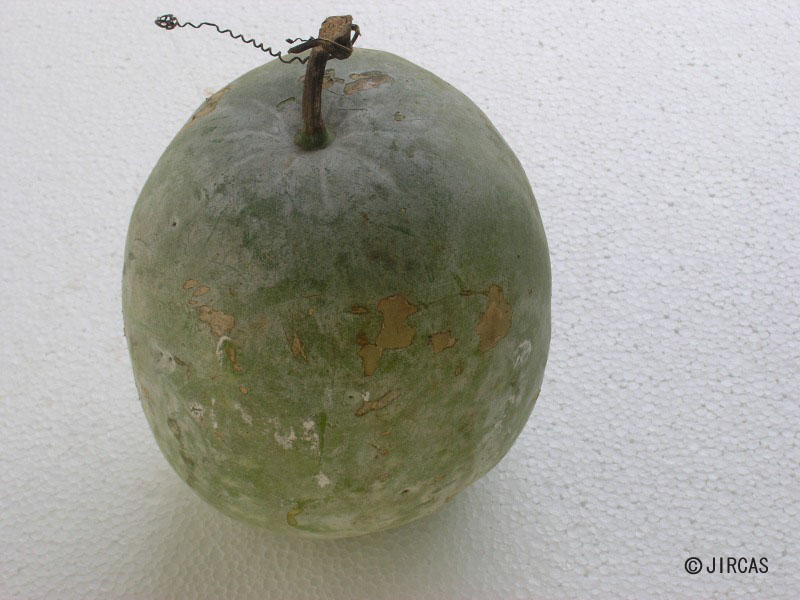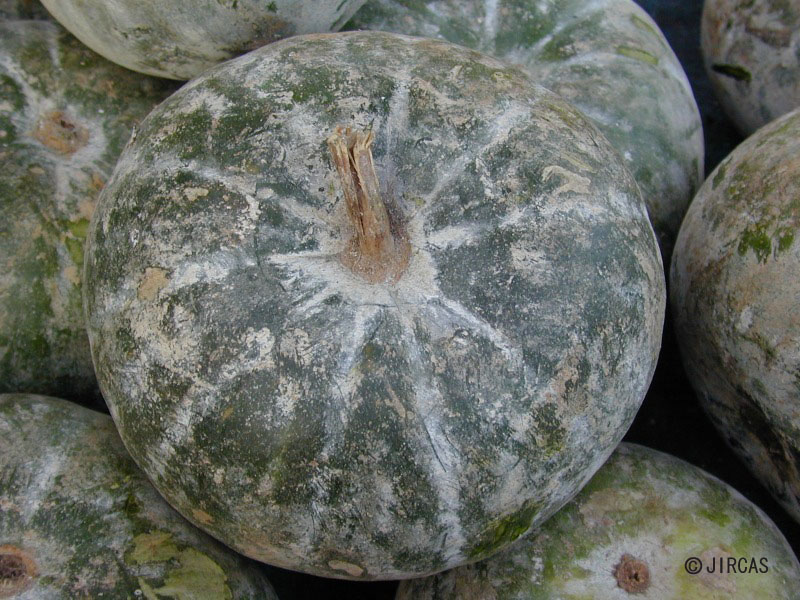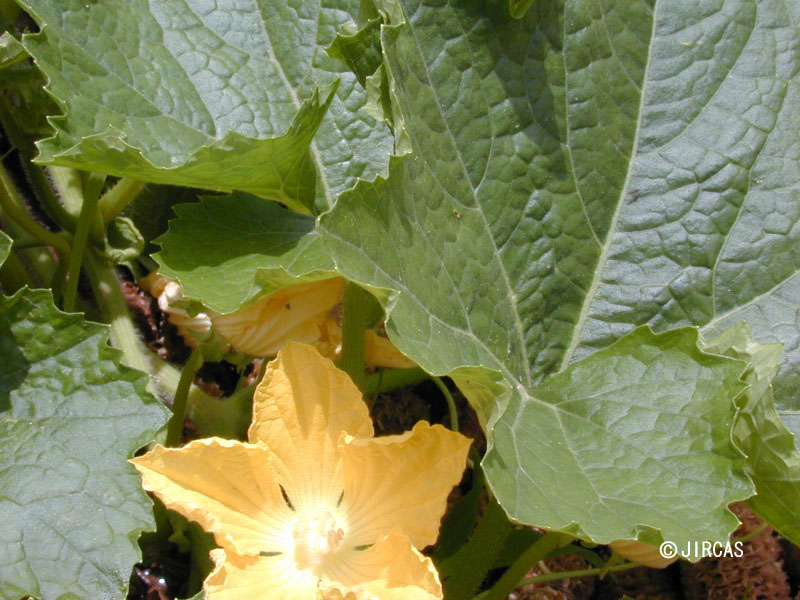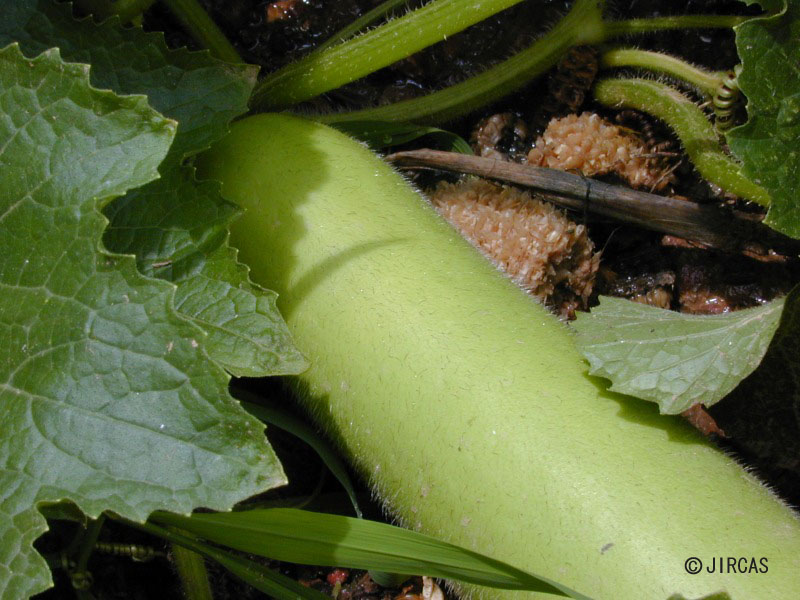Benincasa hispida (Thunb.) Cogn. (Cucurbitaceae)
- Scientific name
- Benincasa hispida (Thunb.) Cogn.
- Family name
- Cucurbitaceae
- Common name
- Wax gourd (English); togan (Japanese)
- Local name
- Fak, fang
Robust annual climbing herb, usually monoecious, hispid, up to several metres long. Stem thick, terete, longitudinally furrowed, whitish-green, with scattered rough hairs. Tendrils inserted beside the leaves, 2–3-fid, 10–35 cm long, twisted at the top, two lateral arms much shorter than central arm. Leaves alternate, simple, distichous; leaf blade broadly ovate in outline, 10–25 × 10–20 cm, deeply cordate at base, apex acuminate, margin more or less deeply and irregularly 5–11 angular or lobed, irregularly undulate-crenate or dentate-serrate, densely hispid on both surfaces, shiny green. Petiole 10–20 cm long. Flowers solitary in leaf axils, large, 8–12 cm in diameter, yellow, unisexual, 5-merous. Pedicel densely hispid, 5–12 cm long in male flowers, 3–4 cm in female flowers. Calyx campanulate, densely silky. Petals almost free. Male flowers with 5 stamens, 4 in connate pairs. Female flowers with densely villose ovoid or cylindrical ovary. Style short, with 3 curved stigmas. Fruit a large, stalked berry (pepo), highly variable in shape and size, ovoid-oblong, ellipsoid or globose, 25–80 × 10–25 cm, dark green to speckled light green or glaucous, thinly hispid or subglabrous, covered with a chalk-white, easily removable wax layer; flesh 2–4 cm thick, white, succulent, slightly fragrant, spongy in the middle. Seeds numerous, flat, ovate-elliptic, 10–15 × 5– 7 × 1–2 mm, white, often with marginal ridge.
Best suited to moderately dry areas in lowland tropics, at elevations from sea level to 1000 m a.s.l. Many local landraces are found among various ethnic groups. Propagated by direct seeding in well-prepared trenches or holes filled with manure or compost. Supported plants should be planted 60–80 cm apart, with a row spacing of 1–1.5 m. Plants allowed to trail over the ground should have wider spacing (2–3 m). The optimum growth temperature is 23–28°C. The ratio of female to male flowers is increased under relatively cool weather and short days.
Young shoots, flowers, and fruits are consumed as vegetable in various parts of Thailand. Fruits are used to prepare clear soups with pork or chicken, such as tom jued fak sai gai . Mature fruits contain 96 g water, 0.2 g protein, 0.1 g fat, 3.5 g carbohydrates, 0.2 mg vitamin B1, 0.03 mg vitamin B2, 0.5 mg niacin, 14 mg vitamin C, 14 mg calcium, 0.4 mg iron, 7 mg phosphorus, and 16 mg magnesium per 100 g serving.
Young shoots, flowers, and fruits are consumed as vegetable in various parts of Thailand. Fruits are used to prepare clear soups with pork or chicken, such as tom jued fak sai gai . Mature fruits contain 96 g water, 0.2 g protein, 0.1 g fat, 3.5 g carbohydrates, 0.2 mg vitamin B1, 0.03 mg vitamin B2, 0.5 mg niacin, 14 mg vitamin C, 14 mg calcium, 0.4 mg iron, 7 mg phosphorus, and 16 mg magnesium per 100 g serving.







